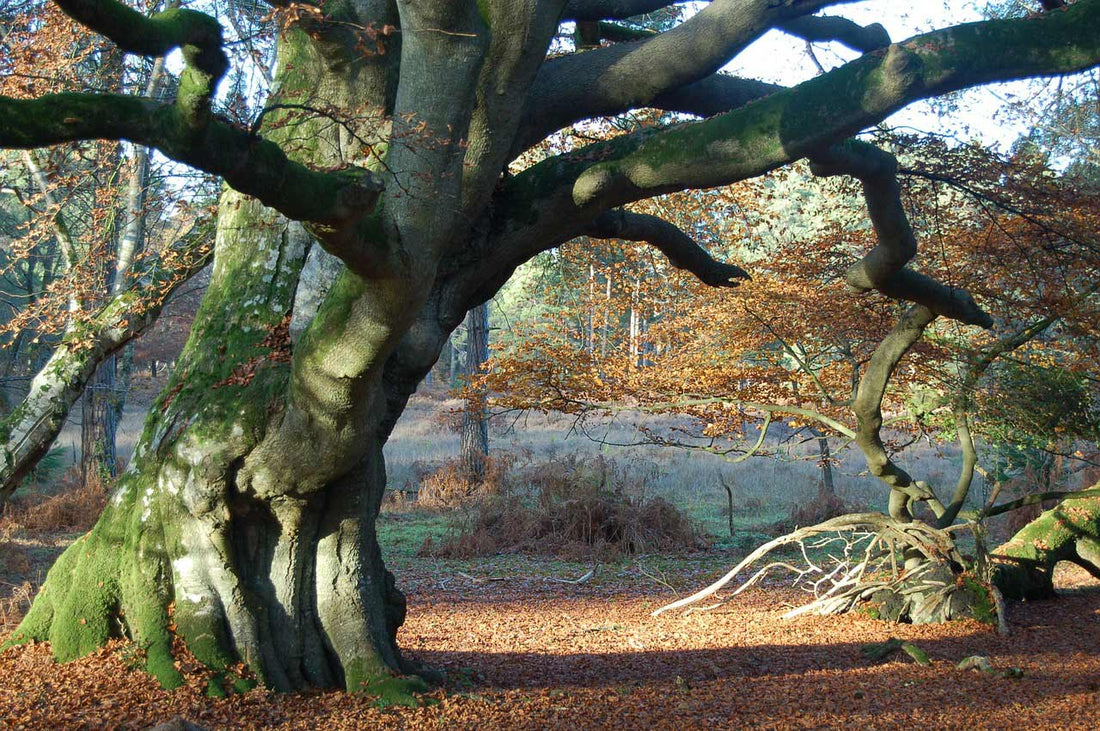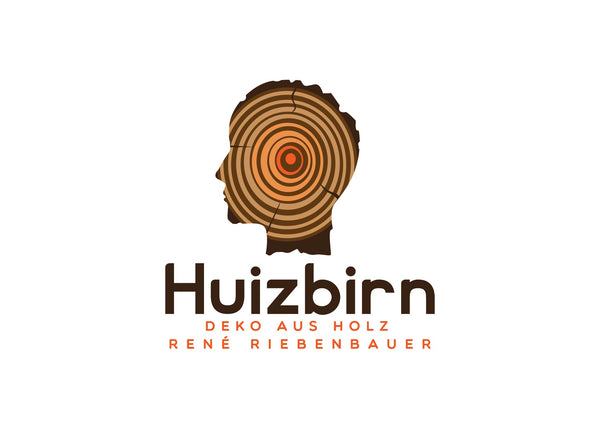
The red beech & beech wood
The "Mother of the Forest" - the European beech
The common beech (Fagus sylvatica) (colloquially called simply "beech") is one of the best known and most important representatives in Europe's forests.
Due to its impressive size and the many important functions it performs in the forest, the beech tree is affectionately called the "Mother of the Forest." Among other things, it ensures the formation of valuable humus and, with its powerful, central roots, penetrates the forest floor, providing it with stability.
The dense foliage and the distinctive, smooth bark are also further characteristics of this mighty European deciduous tree.
-
approx. 200 old copper beech trees

Bark of a common beech

Habitus & distribution of the common beech
The common beech is native to almost all of Europe and is widespread in many forests. It prefers deep, nutrient-rich soils and is often found in mixed forests. Waterlogged or excessively moist soils, however, are not suitable habitats.
With its characteristic, rounded crown and a height of up to 40 meters, it is often impossible to miss, and its imposing appearance characterizes local forests. The thick main trunk often splits into two branches, which unfortunately poses the risk of severe storm damage to beech trees.
|
approx. 200 old copper beech trees with storm damage

|
View of an autumnal beech forest |
Beeches or special beech species are also becoming increasingly popular in larger gardens and parks. Furthermore, common beeches and copper beeches are also being planted as hedges.
The copper beech in particular is a visual highlight due to its dark red leaf color.
Well-known beech species are:
- European beech
- Copper beech
- Chinese beech
- American beech
- Fern-leaved beech
- Copper beech
- Columnar beech
- various "hanging growth forms"
Note: The hornbeam is not related to the common beech and belongs to the birch family.
Beech trees can reach an age of up to 300 years.
|
Green leaves of the common beech  |
Autumn coloring of beech leaves
|
Properties & Uses of Beech Wood
Beechwood is known for its hardness, elasticity, and uniform structure. It is a heavy wood, yet easy to work.
The color varies from pale pink to a warm, reddish brown. Hence the origin of the name "red beech."
Beechwood is ideal for furniture, parquet flooring, and other carpentry work, but is also highly valued as firewood and is used for smoking.
The typical speckled wood is often seen on various kitchen utensils , cutting boards or children's toys.
Beech wood, however, is not suitable for outdoor use.
Use of beech wood
- Furniture construction, flooring: Due to its hardness and durability at a comparatively low price thanks to high availability, beech is probably the most frequently used valuable wood
- Wooden kitchen utensils : Because the wood is hard and durable and does not splinter, it is often used for all kinds of kitchen utensils, cutting boards, children's toys, wooden bowls , etc.
- Firewood: Due to its high availability, easy splitting and excellent calorific value, beech is a popular firewood
- Packaging industry: Beech wood is also becoming increasingly important in the packaging industry, plywood, laminated boards, etc.
|
Fruits of the beech - beechnut |
Beech firewood |
My conclusion about the red beech and its wood
The common beech is not only an impressive and important component of our forests, but also a versatile wood.
These days, beechwood is unfortunately often neglected – in my opinion, this is often due to the rather calm, almost "boring" grain pattern, but also because we come into contact with beechwood every day.
Beechwood, however, also offers particularly "wild" color variations and grains, which are then referred to as "heartwood beech." Heartwood beech or wild beech is therefore not a specific "beech species," but simply the name for the wood of the beech tree, which, depending on the specimen, forms or does not form in the wood and around the heartwood (not in the core!) during the tree's lifespan.
Beechwood tends to quickly "chunk" when exposed to the elements outdoors. This means that the wood is in the process of decomposing, being decomposed by fungi and discolored, particularly decoratively. However, this process also causes the wood to lose its resilience and hardness, rendering it useless for further processing or as firewood—except for wood turners or other wood craftspeople who stabilize and strengthen chunked beechwood using their own processes, and process it for, among other things, high-quality writing instruments .
Otherwise, the wood is excellent for turning . Wooden products such as wooden bowls , wooden vases , wooden spice mills , and the like often turn out easily.
However, due to its hardness, grinding can sometimes be quite time-consuming.
Have I piqued your interest in beechwood? Then check out all the products in my online shop Products made from red beech wood to.
|
Wood products made from beech |
|
|
Wooden bowl made of beech
|
Wooden vase made of red beech |
|
Wooden writing instruments made of beechwood |
Wooden bottle opener made of red beech |










